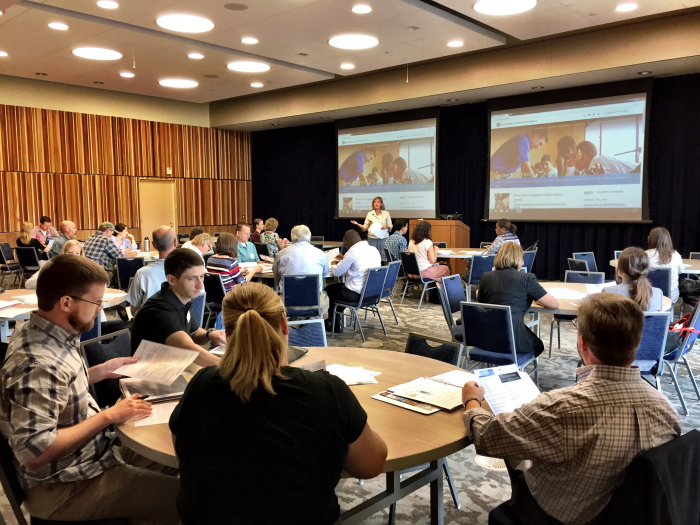Lifelong Learning for Grand Valley Faculty
Sep 3, 2019
If you’ve heard stories from friends attending colleges where classes are taught by teaching assistants, you may already have an appreciation for our school’s policies regarding professors teaching their own classes. But a less obvious classroom benefit is the professional development provided to professors by the Robert and Mary Pew Faculty Teaching and Learning Center.
“Learning is a lifelong pursuit,” said Professor Christine Rener, director of the FTLC. “So learning how best to teach your subject and engage students is something all faculty should be learning throughout their career, as that changes over time. That’s why we offer many different kinds of programs — we host mentoring groups for relatively new faculty, we have online workshops, we sponsor financial support for faculty to go to conferences to learn more about teaching and learning.”
This August 21, the FTLC hosted their 25th Annual Conference on Teaching and Learning, an event consisting of a keynote speaker and twelve faculty-led concurrent sessions.
“Each year the conference has a different theme,” said Rener. “Last year the theme was storytelling, so we brought in our keynote speaker from The Moth — they’re an organization based in New York who give workshops to educators to help them craft their storytelling and public speaking. This year, we wanted to make sure that we connected with the water focus of Grand Valley’s Making Waves Initiative, so we invited Doctor Hanna-Attisha.”
Doctor Mona Hanna-Attisha is the physician and public health activist who exposed the dangerous levels of lead in Flint, Michigan’s drinking water back in 2015.
“I had heard Dr. Mona speak at a conference last summer, and everything I heard that she did exemplified what a liberal education is about,” said Rener. “Addressing a real world problem with all kinds of different disciplines and skills — as she was speaking, I was just running down all the different general education skill outcomes in my head. It just fit.”
Many of the sessions, such as How to Write (and Publish) a Great Teaching Case: The Flint Water Crisis and Interdisciplinary Approach to Water through Course Activities and Projects, reflected the theme and keynote. But others like Using Storytelling in Teaching and Professor Donald Zinman’s Controversial Issues in the News and the Classroom served a different purpose.
“Using Storytelling in Teaching was a faculty learning community that was inspired by last fall’s keynote speaker,” explained Rener. “One of the projects that our center supports are faculty small groups that dive deeply into a topic over the course of a semester or a year. Many of the conference’s sessions are the result of these faculty learning communities — or in the case of Professor Zinman, advertising for a community meeting for this year that won’t be offered until winter.”
Each Faculty Learning Community consists of a facilitator and at least four faculty with a mutual interest in the topic and a desire to apply what they learned to their teaching. Their work covers a wide range of interdisciplinary subjects and skill sets.
“Every institution has a different kind of structure to support teaching and learning,” said Rener. “Some smaller schools have a committee of faculty, others have larger organizations like our own. But we’re lucky to have had such dedicated professional development for faculty at all career stages for 25 years.”


























